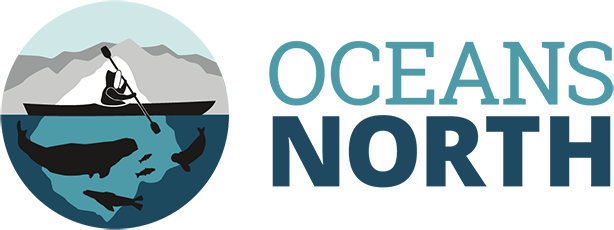Indigenous Knowledge about the Belugas of Churchill
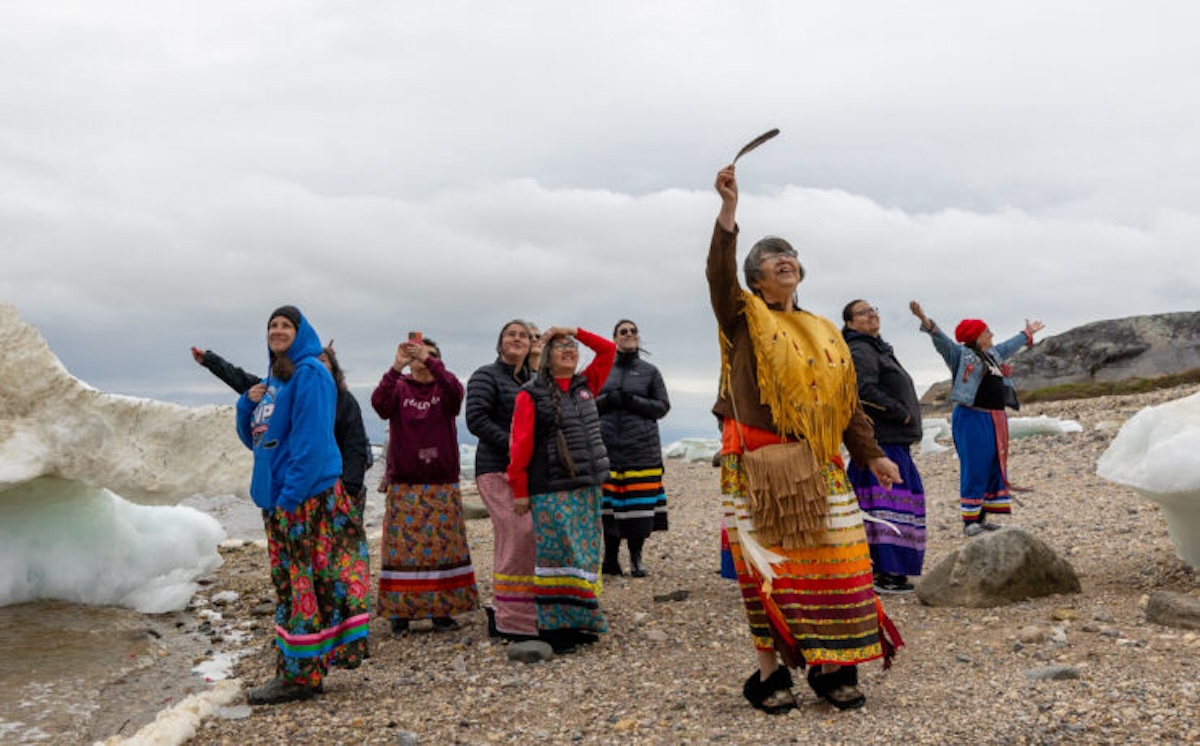
Image – Participants of the Water Ceremony celebrate a bald eagle flying over during the closing stage of the ceremony. Women led the ceremony as community “waterkeepers” and wore traditional ribbon dresses.
Credit – Aaron Janzen
By: Ruth Teichroeb
August 1, 2024
Each summer, tourists from around the world flock to Churchill, Manitoba, eager to see the thousands of beluga whales that return to feed and calve in the Churchill River estuary on Western Hudson Bay. But long before the world’s largest congregation of majestic white whales became a major tourist attraction, the Indigenous residents of the community had a special relationship with belugas that dates back centuries.
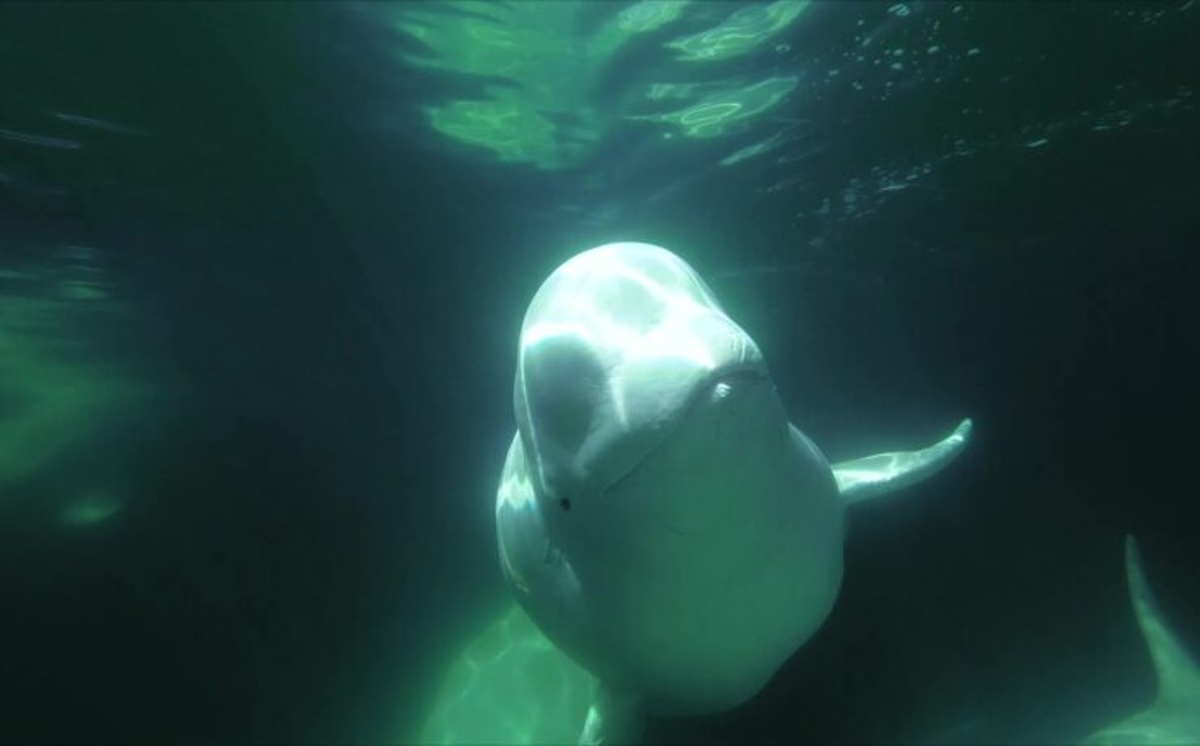
Image – A beluga swims in Hudson Bay.
Credit – Oceans North
A new storytelling project sponsored by Oceans North is gathering Indigenous and community knowledge about belugas from Inuit, Dene, Cree, and Metis residents of Churchill as part of an ongoing effort to record Indigenous perspectives that reflect the long co-existence of people and belugas at Churchill and Western Hudson Bay. This knowledge can be used to inform and educate generations to come as well as to help guide decisions around how to manage increasing human activity in an era of climate change.
“A big focus of the Churchill Storywork Project is trying to elevate voices that aren’t often heard but provide valuable information and insights when planning for the future,” said Aaron Janzen, senior field campaigner with Oceans North.
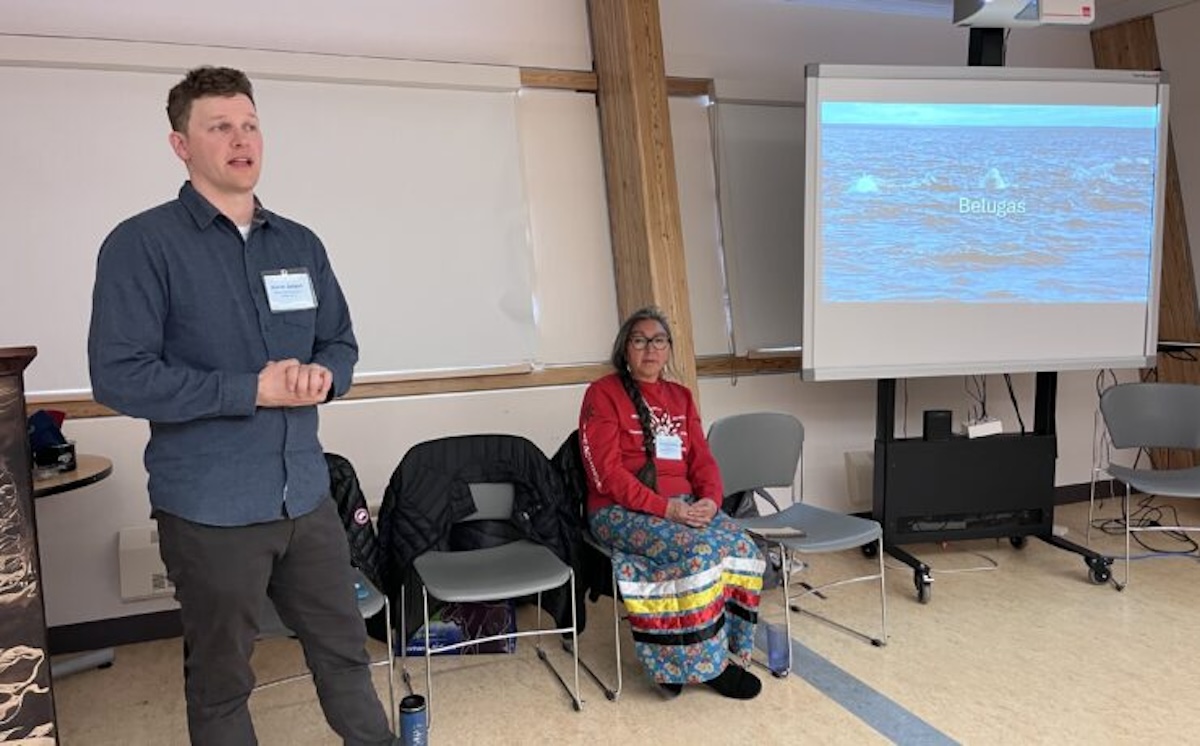
Image – Aaron Janzen and Georgina Berg presenting about the Churchill Storywork Project during the Honouring the Water Conference & Gathering held at the Churchill Northern Studies Centre.
Credit – Mira Oberman
Last month, Janzen and co-researchers Heather Spence-Botelho and Kt Miller facilitated storytelling circles with 22 Indigenous residents who agreed to share their knowledge about beluga whales in the Churchill region. The contributors, both young and old, shared their stories either individually or in small circles. A local advisory council identified a list of possible interviewees and helped guide the process.
The sharing circles began with the question “When was the first time you saw a beluga whale?” and recorded a variety of stories about how individuals and communities related to beluga whales, both historically and up to the present. The most common observation from contributors was that “the whales have always been there.”
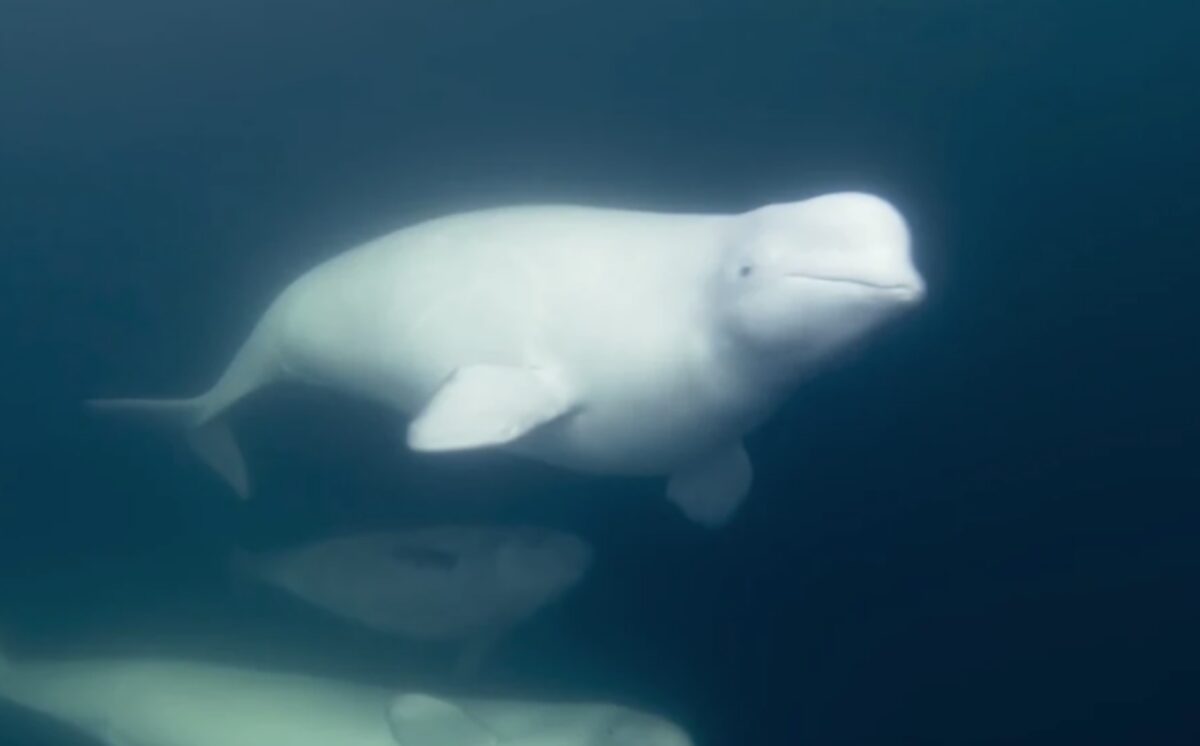
Image – Beluga whales in Hudson Bay.
Credit – Christopher Paetkau
The relationship between people and belugas in this region stretches into the distant past, where belugas have been, and continue to be, an important food source for the Inuit of the region, as well as having cultural and spiritual significance. After the Hudson Bay Company set up an outpost in Churchill in 1689, whaling took place up until 1931. A whaling plant established in 1949 paid local hunters by the foot for belugas, which were valued for their oil and meat. When whale hunting ended in 1967, some local residents — nicknamed “cold water cowboys” – were hired to capture dozens of belugas for zoos and aquariums up until the early 1990s.
“Some recalled taking part in the live captures as whale jumpers or boat drivers,” Janzen said. “For others, their first glimpse of a beluga was seeing whales in a tank before they were shipped away.”
In recent decades, ecotourism has drawn growing numbers of tourists to Churchill to see the white whales. As a result, an “unspoken agreement” not to hunt belugas in the Churchill River estuary exists among local residents, including those who are Inuit, Janzen said.
“It’s out of respect for tourism,” he said. “Inuit who want to eat muktuk (whale blubber and skin) have to get it from hunters in Arviat.”
Contributors also talked about their visions for the future, including ensuring that beluga whales continue to thrive in the region and protecting them from threats such as pollution. Some Inuit expressed a desire to be able to return to their tradition of hunting belugas.
“Everyone talked about how special the whales are in Churchill and how they always want them to be there,” Janzen said.
In the next phase of the project, data from the interviews will be analyzed and summarized in a variety of forms, including podcasts and a report. Initial findings will be reviewed by the advisory council before being shared with the local community.
The project is modelled after a thesis research project conducted by Kt Miller and co-researcher Georgina Berg which focused on Indigenous stories of co-existence with polar bears in Churchill. Data from that project was shared through podcasts and other articles. The storywork project could be continued to focus on other species and themes, with the next potential iteration to focus on birds.
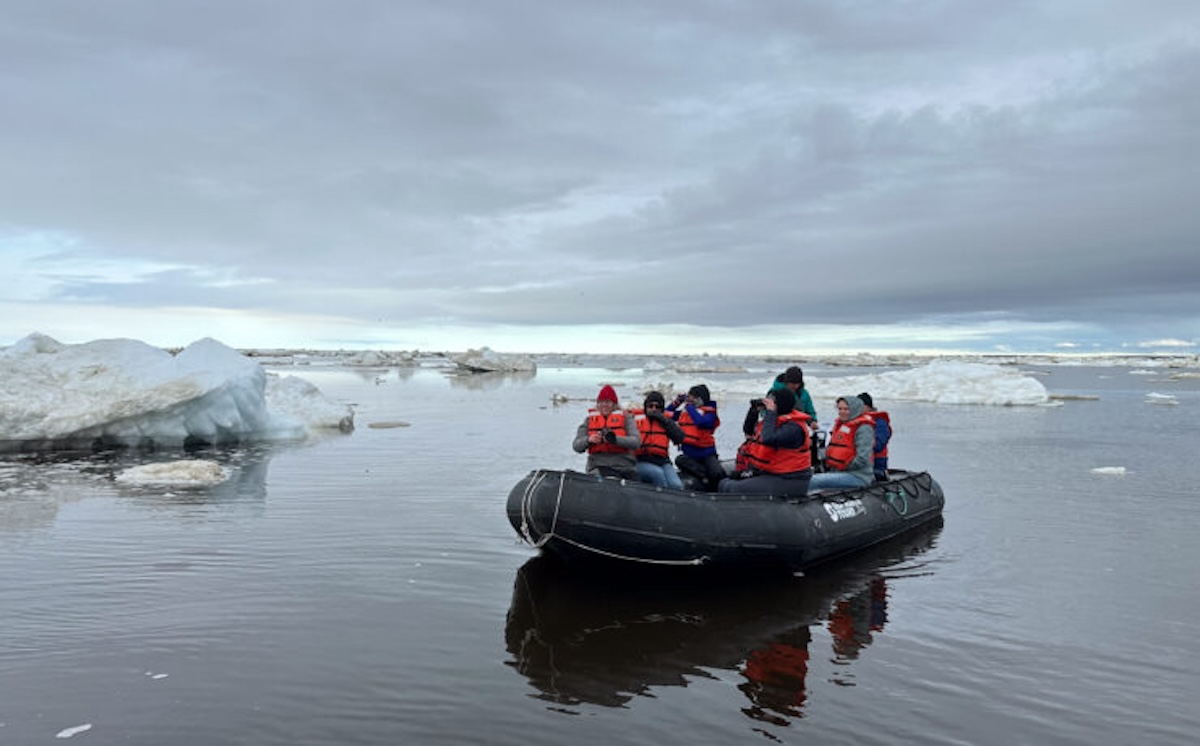
Image – Participants in the Honouring the Water Conference from CPAWS, the Kitaskeenan Kaweekanawaynichikatek Project and Parks Canada were lucky enough to go out on a boat tour of the Churchill River estuary and Hudson Bay to look for beluga whales hiding amongst chunks of sea ice that still remained.
Credit – Aaron Janzen
Information about the Churchill Storywork Project was also presented during the “Honouring the Water” conference and gathering in Churchill last month that was collaboratively organized by CPAWS and Oceans North. “Honouring the Water” opened with a water ceremony conducted by Cree elder Susan Kobliski and thirteen local women.
Speaking to the Honouring the Water attendees, Environment and Climate Change Minister Tracy Schmidt said the NMCA also provides “a very exciting opportunity” for Manitoba to achieve its commitment to protect 30 percent of Manitoba by 2030. “It’s an ambitious commitment, but I think it’s an achievable one and it’s going to be done by working together with local communities and with the Indigenous peoples of Manitoba.”
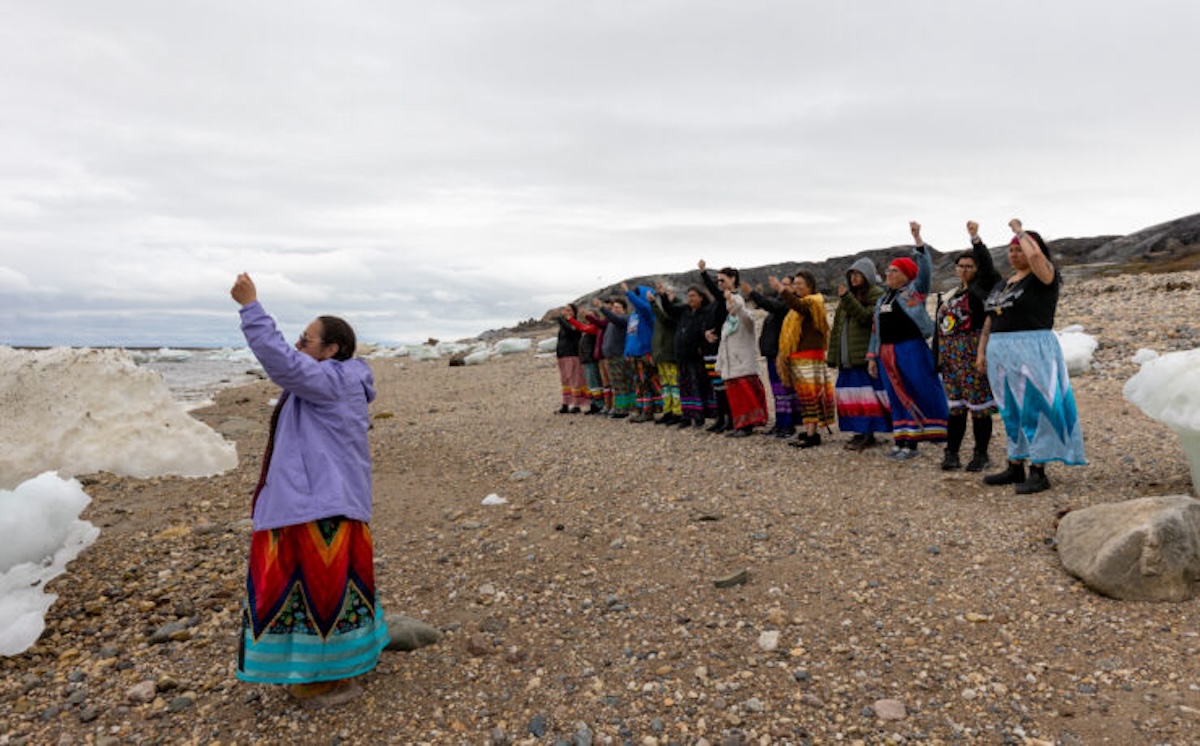
Image – On the bank of the Churchill River Susan Kobliski leads a Water Ceremony with 13 women from Churchill and representatives from the Kitaskeenan Kaweekanawaynichikatek Indigenous Protected Area Project.
Credit – Aaron Janzen
The ceremony, held at the lower dock area near the mouth of the Churchill estuary, reflected on the importance of water as a giver of life, and the important connection between Indigenous people and water, both the fresh water of the river and the salt water of the bay. About 80 people, including two Manitoba cabinet ministers, took part in the ceremony, which was possibly the first public water ceremony in Churchill.
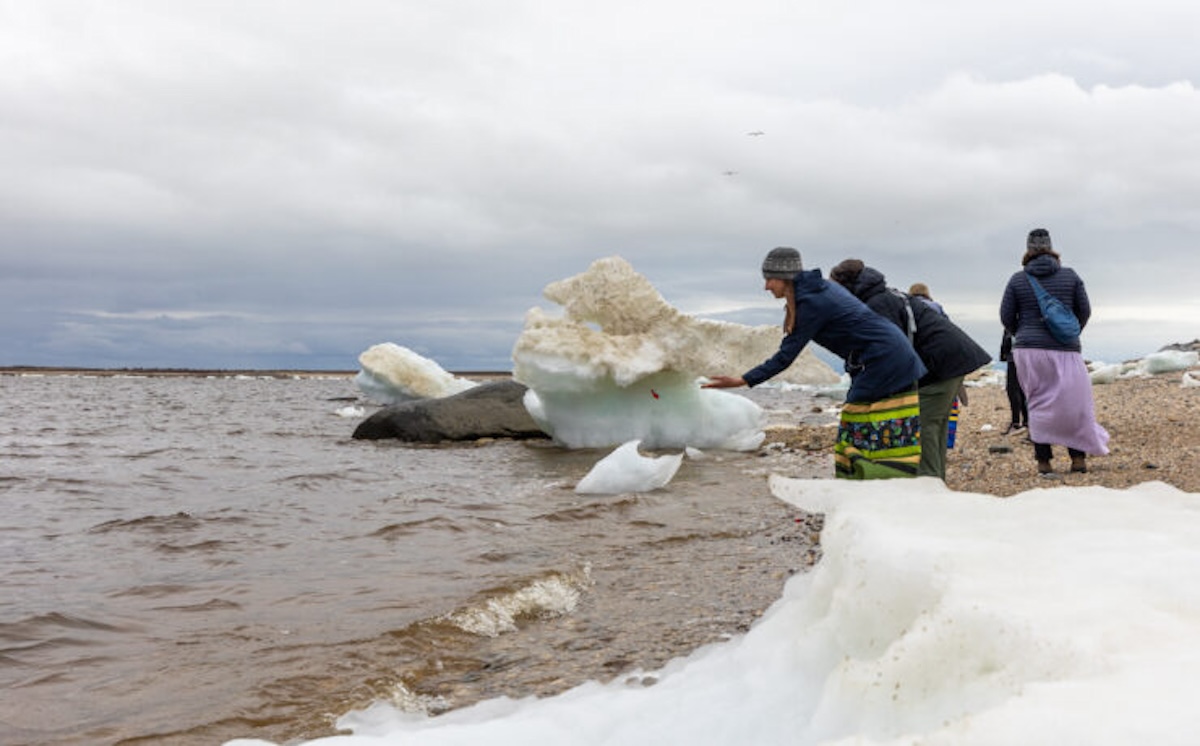
Image – Minister of Environment and Climate Change Tracy Schmidt participating in the Water Ceremony at on the bank of the Churchill River where it meets the Hudson Bay.
Credit – Aaron Janzen
The conference also featured a presentation by Parks Canada about a proposed National Marine Conservation Area (NMCA) for the region, an important opportunity for the community to lead the way in determining how to protect the water and important beluga habitat in Western Hudson Bay.
Speaking to the Honouring the Water attendees, Environment and Climate Change Minister Tracy Schmidt said the NMCA also provides “a very exciting opportunity” for Manitoba to achieve its commitment to protect 30 percent of Manitoba by 2030. “It’s an ambitious commitment, but I think it’s an achievable one and it’s going to be done by working together with local communities and with the Indigenous peoples of Manitoba.”
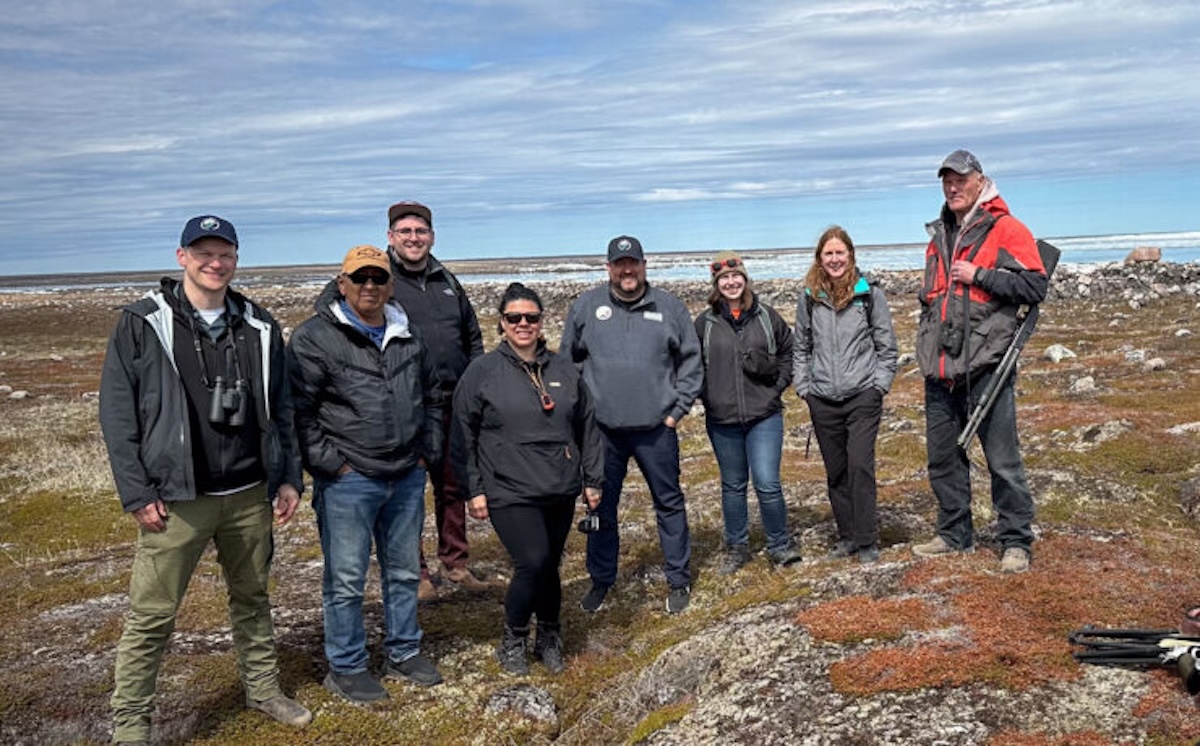
Image – Oceans North facilitated a visit to the culturally and ecologically important Hubbard Point site for Minister Simard and staff from the Department of Sport, Culture and Heritage and the Department of Environment and Climate Change. From left to right: Aaron Janzen of Oceans North; Johnny Mamgark, a former harvester and resident of Arviat; Zack Fleisher from the Department of Sport, Culture and Heritage; Heather Spence-Botelho, a resident of Churchill; Glen Simard, Minister of Sport, Culture and Heritage; Julia Antonyshyn and Nicole Armstrong from the Department of Environment and Climate Change; and bear guard Mike Lawson from Churchill.
Credit – Oceans North
Ruth Teichroeb is a regular contributor to Oceans North and is former communications director. She is based in Sidney, B.C.
